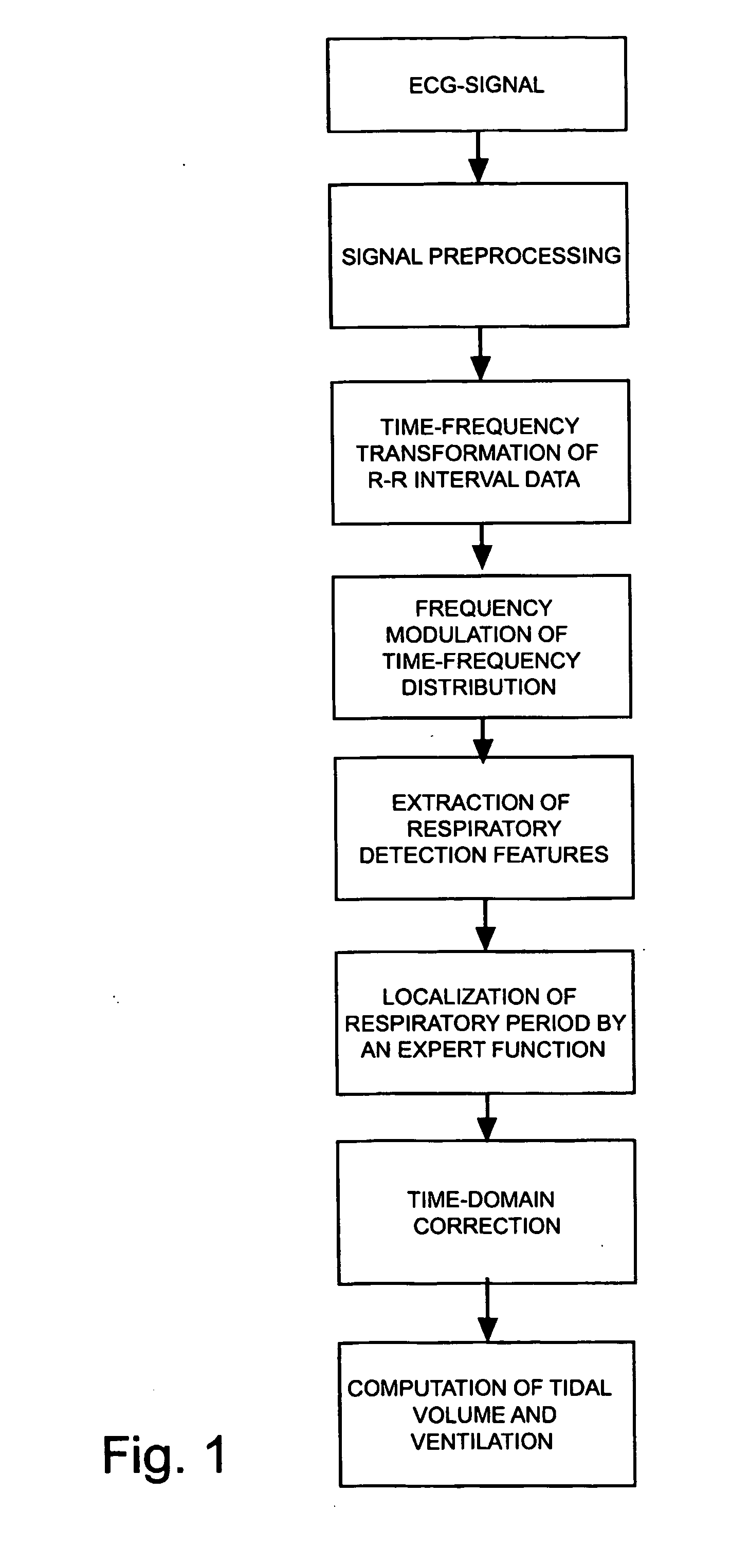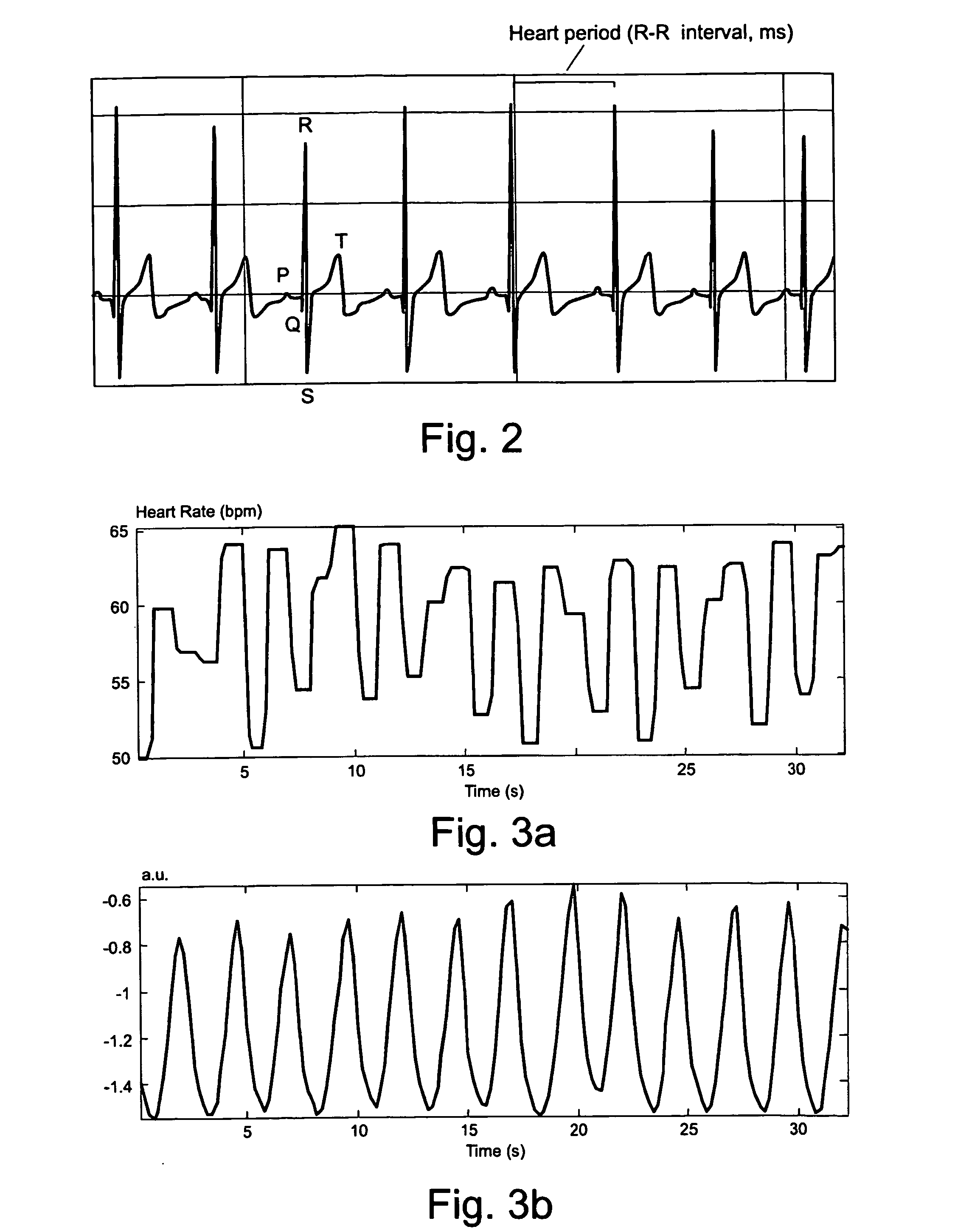Procedure for deriving reliable information on respiratory activity from heart period measurement
a technology of respiratory activity and heart rhythm, applied in the field of physiological parameters monitoring, can solve the problems of difficult to obtain full control, respiratory pattern of hrv may be overshadowed, and difficulty in applying heart period in applied contexts, so as to reduce respiratory induced artifacts.
- Summary
- Abstract
- Description
- Claims
- Application Information
AI Technical Summary
Benefits of technology
Problems solved by technology
Method used
Image
Examples
Embodiment Construction
Introduction
[0054] The following terms and abbreviations are used herein:
[0055] Custom-designed filtering: The procedure of frequency modulating the amplitude of the HRV estimates using a filter that has been optimized for specific purpose.
[0056] Heart period (HP): The time period (ms) between consecutive R-peaks in the ECG waveform.
[0057] Heart rate variability (HRV): A general term for oscillatory periodic changes in the heart period. HRV may be further divided into high frequency (HF; 0.15-0.50 Hz), low frequency (LF; (0.04-0.15 Hz)), very-low frequency (VLF; 0.01-0.04 Hz) and ultra-low frequency (ULV; 0.0001-0.01 Hz) bands.
[0058] Instantaneous center frequency (ICF): The center of the mass in the (HRV) frequency distribution within a given time instant.
[0059] Maximum gradient: Maximum gradient is used to point the frequency location of maximum HRV amplitude within given time instant by finding the frequencies that have a sign change in the derivate from positive to negati...
PUM
 Login to View More
Login to View More Abstract
Description
Claims
Application Information
 Login to View More
Login to View More - R&D
- Intellectual Property
- Life Sciences
- Materials
- Tech Scout
- Unparalleled Data Quality
- Higher Quality Content
- 60% Fewer Hallucinations
Browse by: Latest US Patents, China's latest patents, Technical Efficacy Thesaurus, Application Domain, Technology Topic, Popular Technical Reports.
© 2025 PatSnap. All rights reserved.Legal|Privacy policy|Modern Slavery Act Transparency Statement|Sitemap|About US| Contact US: help@patsnap.com



